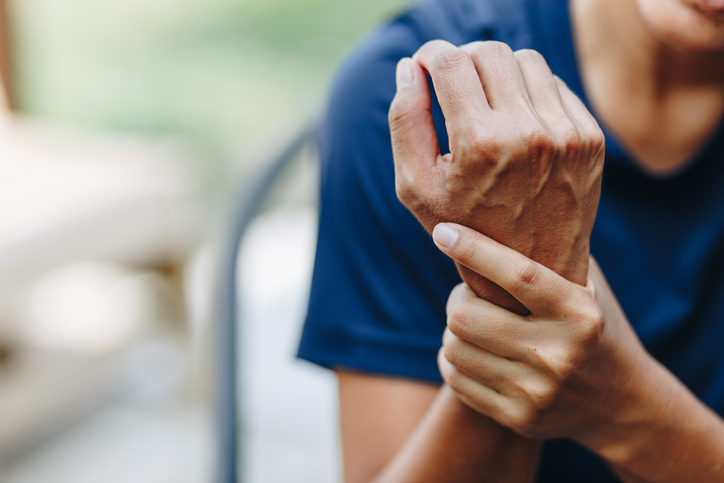Pain
At-Home Treatment Options for Carpal Tunnel Syndrome

What is carpal tunnel syndrome?
Carpal tunnel syndrome is a common medical condition that affects the hand(s) and wrist(s). The carpal tunnel passage is a narrow canal/tube located in each wrist. It holds the median nerve and tendons that connect the hand and forearm. The median nerve controls movement and sensation in the thumb and the fingers except the pinky and half of the ring finger.
Carpal tunnel syndrome occurs when the carpal tunnel is compressed or becomes too narrow, which creates pressure on the median nerve. The resulting inflammation can cause loss of sensation in the fingers and hand.
At-home treatments
In addition to conventional medical treatments for carpal tunnel syndrome, at-home treatments and lifestyle modifications can also help. Early treatment of carpal tunnel syndrome can slow the progression, stop the progression, or even reverse the condition.
Medications
Some over-the-counter medications may help relieve symptoms:
- Nonsteroidal anti-inflammatories (NSAIDs), such as naproxen sodium or ibuprofen, may lessen inflammation and pain.
- Acetaminophen may help relieve pain.
- Topical treatments such as diclofenac gel or lidocaine may also reduce pain.
Lifestyle modifications
The following lifestyle modifications and remedies may provide significant improvement of carpal tunnel symptoms:
- Wrist braces
Wearing wrist braces during the day when performing activities that cause symptoms to worsen can be helpful. Wrist braces worn at night can prevent wrist bending, which can also make symptoms worse. - Temperature therapy
Treating carpal tunnel syndrome with hot and cold may help reduce pain. Cold compresses can be applied to the wrist for 10 to 15 minutes at a time to help reduce inflammation. Heating pads and warm compresses can be applied to provide pain relief. - Avoidance of repetitive activities
If possible, avoiding activities that trigger symptoms is beneficial. When performing activities that require repetitive motions, such as typing, using the minimum amount of force required can prevent the worsening of symptoms. - Adjustment of sleep positions
Sleeping on the hands places additional pressure on the median nerve. Adjusting sleep positions to avoid sleeping on the hands can help reduce symptoms. - Breaks from required repetitive activities
If repetitive activities are necessary for work or daily activities, taking breaks or setting a time limit can be helpful. Gentle stretching during a break offers an added benefit.

















